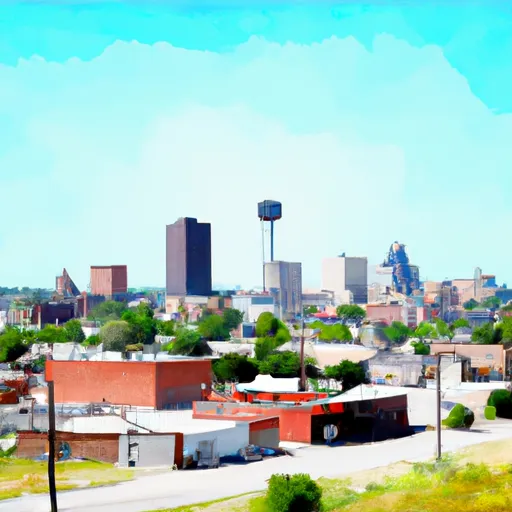-
 Snoflo Premium
Snoflo Premium
Get unlimited access to all our content
With no Ad interruptions! - Start Your Free Trial Login with existing account
Richards
Eden Index
Climate
8.3
•
Recreation
2.8
•
Community
2.0
•
Safeguard
4.8/10

Richards, Texas is a small town located in Grimes County. It experiences a humid subtropical climate, which means hot, humid summers and mild winters. Summers are typically hot with temperatures often exceeding 90°F, while winters are mild with temperatures rarely dropping below freezing. The area receives an average annual rainfall of about 45 inches.
Hydrology constituents in Richards are primarily influenced by the nearby Navasota River. The river provides a water source for the town and supports various aquatic life. Additionally, there are several ponds and lakes in the area that offer recreational activities such as fishing and boating.
Outdoor recreation opportunities in Richards are abundant. The town is surrounded by picturesque countryside, making it perfect for activities like hiking, camping, and birdwatching. There are also opportunities for hunting, with the availability of deer, turkey, and other game in the surrounding forests. Richards is home to several parks and nature reserves that offer a peaceful environment for nature enthusiasts.
Overall, Richards, Texas provides a comfortable climate, access to water bodies, and a range of outdoor activities, making it an attractive destination for nature lovers.
What is the Eden Index?
The Snoflo Eden Index serves as a comprehensive rating system for regions, evaluating their desirability through a holistic assessment of climate health, outdoor recreation opportunities, and natural disaster risk, acknowledging the profound impact of these factors on livability and well-being.
Climate Health Indicator (CHI): 8.3
Richards receives approximately
1123mm of rain per year,
with humidity levels near 83%
and air temperatures averaging around
20°C.
Richards has a plant hardyness factor of
8, meaning
plants and agriculture in this region tend to thrive here all year round.
By considering the ideal temperature range, reliable water supplies, clean air, and stable seasonal rain or snowpacks, the Climate Health Indicator (CHI) underscores the significance of a healthy climate as the foundation for quality living.
A healthy climate is paramount for ensuring a high quality of life and livability in a region, fostering both physical well-being and environmental harmony. This can be characterized by ideal temperatures, reliable access to water supplies, clean air, and consistent seasonal rain or snowpacks.
Weather Forecast
Streamflow Conditions
San Jacinto
Area Rivers
San Jacinto
Snowpack Depths
San Jacinto
Reservoir Storage Capacity
San Jacinto
Groundwater Levels
Recreational Opportunity Index (ROI): 2.8
The Recreational Opportunity Index (ROI) recognizes the value of outdoor recreational options, such as parks, hiking trails, camping sites, and fishing spots, while acknowledging that climate plays a pivotal role in ensuring the comfort and consistency of these experiences.
Access to outdoor recreational opportunities, encompassing activities such as parks, hiking, camping, and fishing, is crucial for overall well-being, and the climate plays a pivotal role in enabling and enhancing these experiences, ensuring that individuals can engage in nature-based activities comfortably and consistently.
Camping Areas
| Campground | Campsites | Reservations | Toilets | Showers | Elevation |
|---|---|---|---|---|---|
| Kellys Pond Dispersed | 8 | 237 ft | |||
| FM 521 River Park | None | 20 ft | |||
| Purtis Creek State Park | 78 | 424 ft | |||
| Riverside Park - Bay City | 40 | 34 ft | |||
| Hollywood Bottom Park | None | 74 ft | |||
| Spring Creek Park | 11 | 184 ft | |||
| Stubblefield Lake | 60 | 219 ft | |||
| Brazos Bend State Park | 77 | 63 ft |
Nearby Fishing
Nearby Ski Areas
Catastrophe Safeguard Index (CSI):
The Catastrophe Safeguard Index (CSI) recognizes that natural disaster risk, encompassing floods, fires, hurricanes, and tornadoes, can drastically affect safety and the overall appeal of an area.
The level of natural disaster risk in a region significantly affects safety and the overall livability, with climate change amplifying these risks by potentially increasing the frequency and intensity of events like floods, fires, hurricanes, and tornadoes, thereby posing substantial challenges to community resilience and well-being.
Community Resilience Indicator (CRI): 2.0
The Community Resilience Indicator (CRI) recognizes that education, healthcare, and socioeconomics are crucial to the well-being of a region. The CRI acknowledges the profound impact of these elements on residents' overall quality of life. By evaluating educational resources, healthcare accessibility, and economic inclusivity, the index captures the essential aspects that contribute to a thriving community, fostering resident satisfaction, equity, and social cohesion.

